"Hand-hewn timber" refers to posts, beams and other framing members that were squared by hand with an axe. Hand hewing was typically done with two axes: a scoring axe and a broadaxe.
Hewing was practiced in nearly all cultures with the technology (metallurgy) necessary to forge an axe blade.
Notice how some of the axes in the photo at left have offset
handles; handles; they do not lie flat. This feature protects the carpenter's
knuckles as he chops to the line. But the novice still has to be
careful not to "bark the knuckles."
Hewing is arduous work. As such, logs are selected that measure
just big enough to supply the required timber. It is common to find barn
timbers with bark showing along the corners. Logs were squared for
a number of reasons. Principal among them is that squared timber is
easier to create joints in than is round timber. Additionally, removing
the log's outer layer, the bark and sapwood, made timber more
resistant to insect damage and decay.
Preparing the Log
Iron "dogs" secure the log to sleepers and level and plumb lines are established.
The beam is sized off of the level and plumb lines. Then, a chalk line is snapped over the bark connecting both ends of the timber. Notches are then cut to the line with the scoring axe. Steel-toed boots are a good idea since the hewer stands on top of the log to make the notches.
Next, the parts between the notches (the joggles) are hewn off with the broadaxe
Videos of the process:
The German Way employs two men in the scoring process

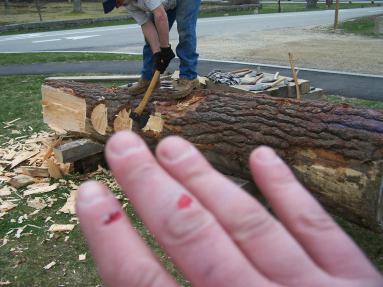
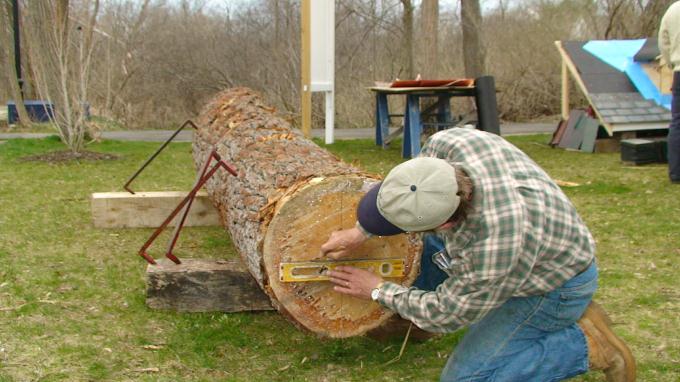
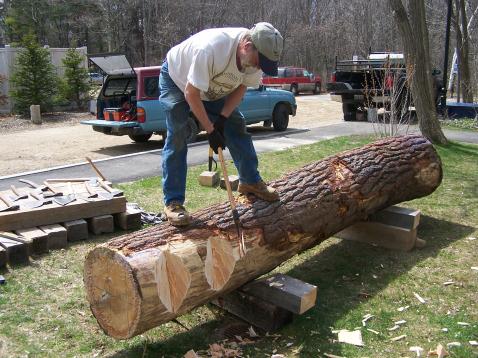
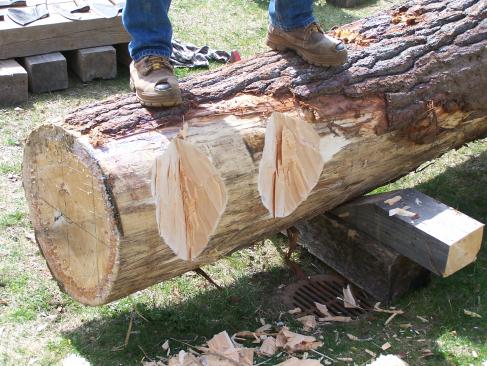
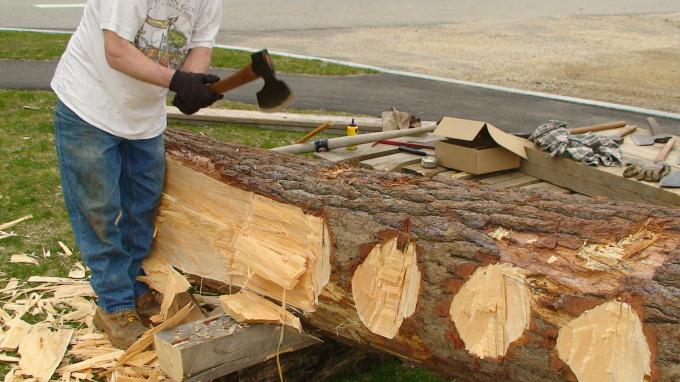
Celebrating the barns of Maine